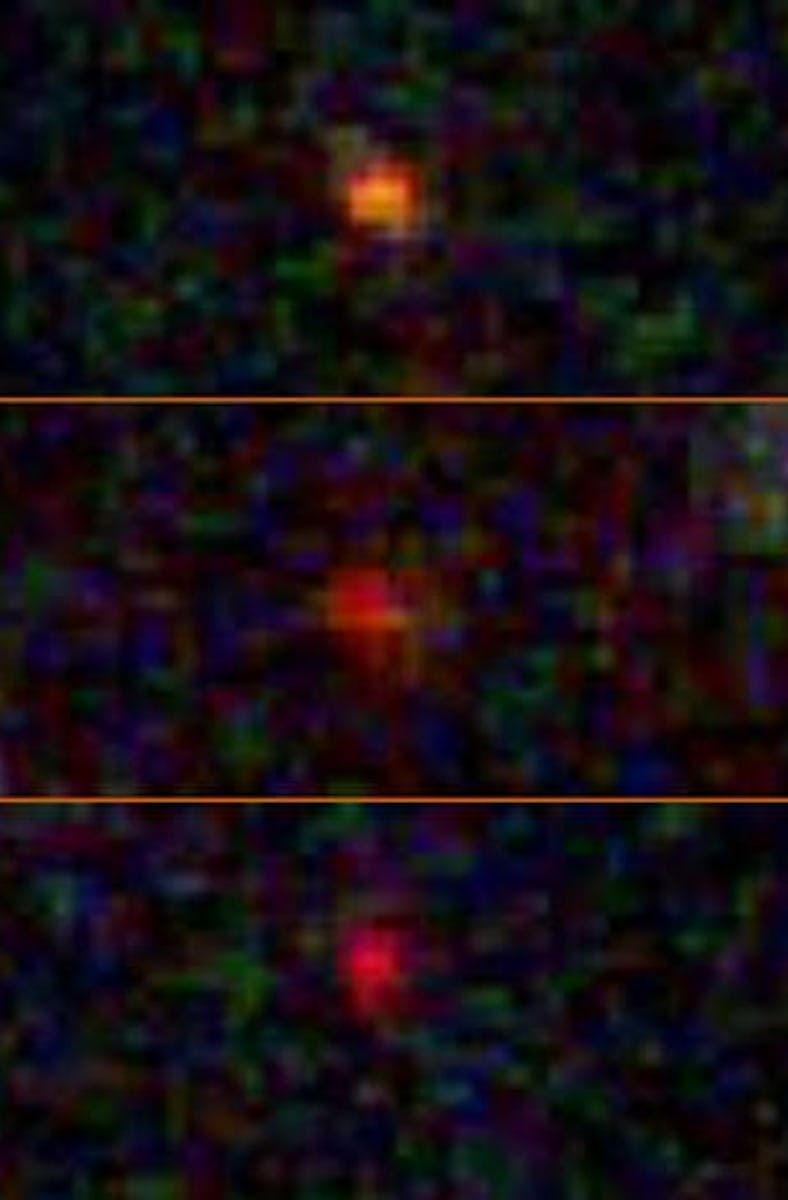Astronomers May Have Found Ancient Stars Formed from Dark Matter
First stars, is that you?

When it comes to the early universe, astronomers have many questions. One of which is, how did the first stars form?
Today’s generation of stars are forged with hydrogen and helium, which transform via nuclear fusion into energy until the star runs out of that supply. A star like the Sun will then collapse, heat up, inflate, and go supernova. The dust and gas it sprays into space will linger and could go on to form a new star and planets. But what happened in the beginning?
A study published Tuesday in the journal Proceedings of the National Academy of Sciences suggests that NASA’s James Webb Space Telescope (JWST) has already found an answer.
In December 2022, astronomers identified these three specks of light — called JADES-GS-z13-0, JADES-GS-z12-0, and JADES-GS-z11-0 — as ancient galaxies. But now, a team speculates they might actually be “supermassive dark stars.”
A ‘supermassive dark star’
JWST can view regions of space that have never been seen before by human eyes. Its first year was packed with, among other exciting things, galaxy after galaxy peeking at us from the distant universe.
But a few of these objects might be something else — supermassive stars powered by invisible material called dark matter.
Light’s speed is finite. The farther away an object is, the longer its light takes to reach the instruments aboard JWST. Astronomers can witness scenes from the ancient universe in its images. They’re on the lookout for galactic precursors called protogalaxies. From these forebearers until now, galaxies retain the stuff that stars shed throughout their lifetimes, including the heavier elements that are essential to creating life. Knowing how they evolve is a major area of interest.
But as astronomers have scanned for protogalaxies on their quest to unpack our origins, they may, in fact, be looking at something else entirely: the Tuesday paper proposes that three hazy specks from the JWST Advanced Deep Extragalactic Survey (JADES) are actually incredibly-hefty stars, bigger than anything in the modern universe.
They’re called dark stars, owing to an explanation that puts dark matter in the driver’s seat instead of nuclear fusion.
“Dark stars could theoretically grow to be several million times the mass of our Sun and up to 10 billion times as bright as the Sun,” according to a Thursday announcement about the paper.
Revealing the first stars
In the 20th century, galaxy scholars were confused by what they saw. Galaxies seem to have too little mass to stay together in a huddle. Eventually, an explanation would propose that the universe was full of a material that didn’t interact with light. And though this matter couldn’t be seen in telescopes, it had mass to help bind visible matter together.
JWST hasn’t seen the first stars — yet. But astronomers are optimistic that one day it will. And if these three supermassive dark star candidates are confirmed to be what researchers suspect, a deeper understanding of the cosmos will arise.
“The James Webb Space Telescope (JWST) is poised to revolutionize our understanding of the formation and properties of the first luminous objects in the universe,” researchers write in the study.
Dark matter is a foremost source of intrigue for modern astronomers. Missions like the recently-launched Euclid spacecraft and the upcoming Nancy Grace Roman Space Telescope will study dark matter like never before.